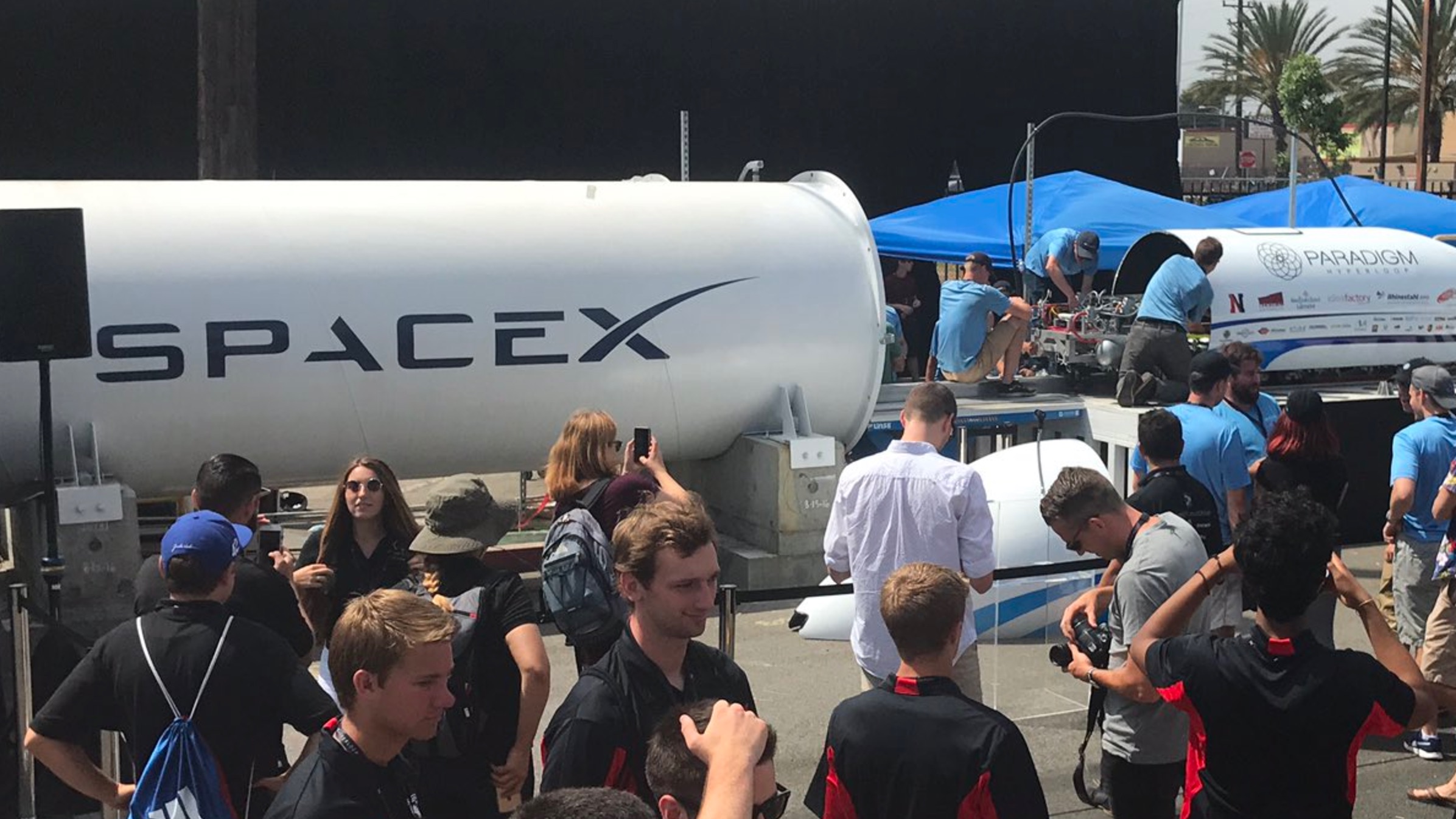
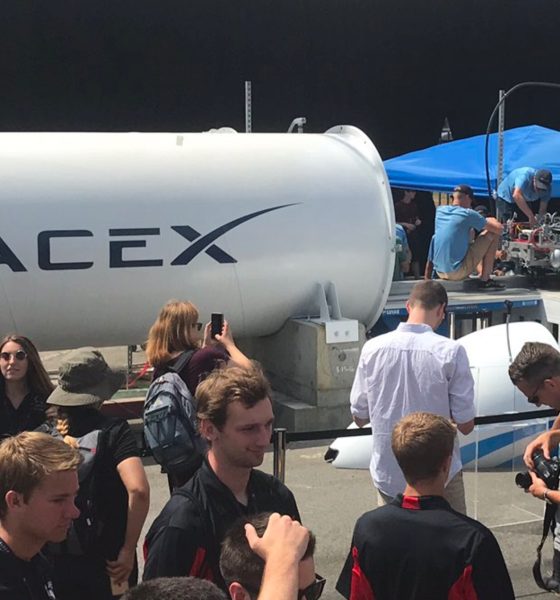
News
SpaceX Hyperloop Competition: Top 3 teams duke it out for fastest pod
Hawthorne councilmembers, members of the California Assembly, and Hawthorne Mayor Alex Vargas were in attendance at the headquarters of SpaceX and The Boring Company for their jointly-hosted Hyperloop Competition 2.
The second such Hyperloop competition sponsored by Elon Musk, the eight months that separated them were filled to the brim with press coverage of The Boring Company (TBC), which has begun to seriously develop an experimental tunnel beneath a central street in Hawthorne, CA. Most intriguingly, TBC publicly acknowledged that it is now pursuing the development of its own form of Hyperloop technology, originally developed and released as a white paper by Elon Musk, albeit with tunnels rather than above-ground vacuum tube constructs.
Update: Watch Elon Musk award this team for having the fastest Hyperloop pod at 202 mph
The second competition was focused on one goal, above all others: top speed. The final three teams chosen for testing in SpaceX’s mile-long vacuum tube were as international as ever. Paradigm Hyperloop, a continuation of the Openloop team from Competition 1, is composed of 26 students from the northeastern U.S. and Canada, designed a pod that made use of air bearings to levitate and was intended to travel as fast as 200 mph through SpaceX’s test track. While not yet officially confirmed, a livestream suggested that their pod reached a maximum speed of approximately 100 km/h or 62 mph. While nowhere near its purported top speed, a member of Paradigm Hyperloop said that the team’s pod “levitated perfectly” and that the test generally went great. Their pod was one of the largest, weighing in at almost a metric ton.
SwissLoop, a team of 40 or so students from Swiss university ETH Zurich, developed a pod that levitated with permanent magnets and was propelled by compressed air, sort of like a rocket. SwissLoop’s SpaceX adviser, a mechanical engineer focused on reusing Falcon 9s on normal days, praised the group’s engineering and construction of the pod during a livestream on Facebook. SwissLoop experienced some technical difficulties while Musk waiting to provide the countdown in Swiss German, and he quipped about connectivity issues that the team was having with their pod. Musk later announced that due to those technical difficulties, SwissLoop’s pod would be removed for troubleshooting and WARR Hyperloop would conduct the second live test.
Pod problem. Developing futuristic transport isn't quick. #Hyperloop pic.twitter.com/QJAngYvCbP
— Jack Stewart (@stewart_jack) August 27, 2017
WARR Hyperloop, the victors of the first Competition, prepared their Pod ii to be tested on Sunday afternoon. One of the smallest pods at only 190 lb, the vehicle was intended to have a top speed of approximately 225 mph – a speed it was reported to be capable of reaching in 12 seconds. Designed by students from the Technical University of Munich, the pod was propelled with a 50 kW electric motor connected to polyurethane wheels. While the method of levitation was not specified, it is understood to be a system of permanent magnets similar to SwissLoop’s implementation. WARR is a German organization and stands for Scientific Workgroup for Rocketry and Spaceflight in English.
Elon Musk somewhat controversially revealed that The Boring Company had received “verbal approval” for an underground Hyperloop between Washington D.C. and New York City, appearing to acknowledge some form of back-room deal with the federal government. He later clarified in a series of tweets and replies that the approval was extremely preliminary and unofficial and that The Boring Company was hard at work beginning to form relationships with the numerous municipalities that would be involved along the proposed route. The several Hyperloop-related companies that formed following Musk’s white paper have been reluctant to make room for a new, Musk-headed competitor in the ring, but The Boring Company is aggressively pushing ahead with their demonstration tunnel in Hawthorne, CA and has successfully applied for the initial permits that will be required.
Mirroring Elon’s typically positive opinion of competition, he bid Hyperloop One and all other companies trying to revolutionize transportation the best of luck during Competition 2. Competition 2 is guaranteed to provide SpaceX and The Boring Company an inside glance at some of the best emerging engineering talent. Hosting the competition is quite possibly the most suave and effective method of recruitment one can readily imagine, with all promising teams generally being given private tours of both The Boring Company and SpaceX facilities.
I hope they and any others trying to advance transport technology succeed
— Elon Musk (@elonmusk) August 27, 2017
Meanwhile, stay tuned for the two max speed pod tests to come later this afternoon. There is no live coverage from SpaceX itself, but SwissLoop has been kind enough to livestream several of the main events on their Facebook page. You can also follow a live Facebook stream here. Follow along live there and check back at Teslarati for coverage of the events!

News
Tesla stands to gain from Ford’s decision to ditch large EVs
Tesla is perhaps the biggest beneficiary of Ford’s decision, especially as it will no longer have to deal with the sole pure EV pickup that outsold it from time to time: the F-150 Lightning.
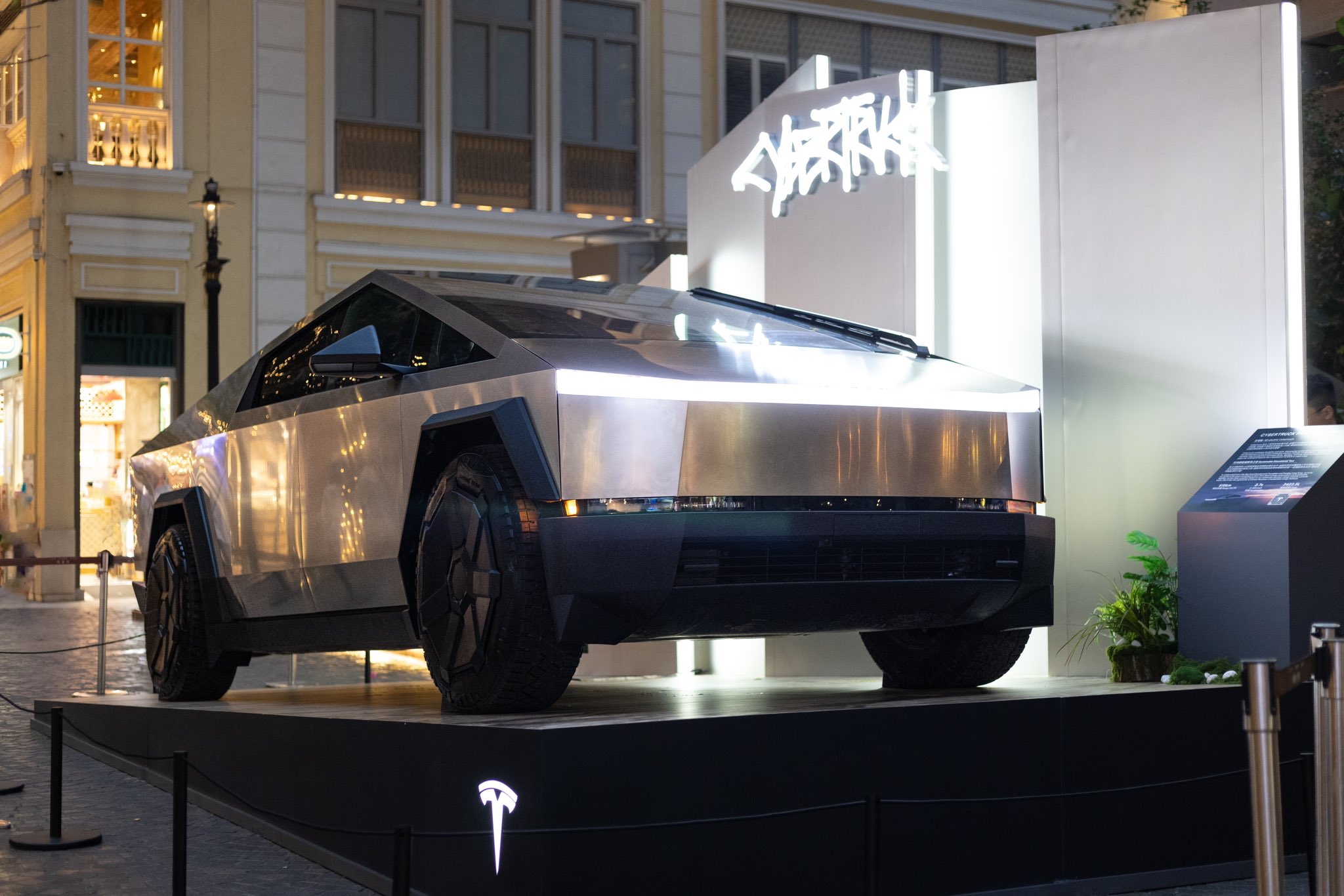
Ford’s recent decision to abandon production of the all-electric Ford F-150 Lightning after the 2025 model year should yield some advantages for Tesla.
The Detroit-based automaker’s pivot away from large EVs and toward hybrids and extended-range EVs that come with a gas generator is proof that sustainable powertrains are easy on paper, but hard in reality.
Tesla is perhaps the biggest beneficiary of Ford’s decision, especially as it will no longer have to deal with the sole pure EV pickup that outsold it from time to time: the F-150 Lightning.
Here’s why:
Reduced Competition in the Electric Pickup Segment
The F-150 Lightning was the Tesla Cybertruck’s primary and direct rival in the full-size electric pickup market in the United States. With Ford’s decision to end pure EV production of its best-selling truck’s electric version and shifting to hybrids/EREVs, the Cybertruck faces significantly less competition.
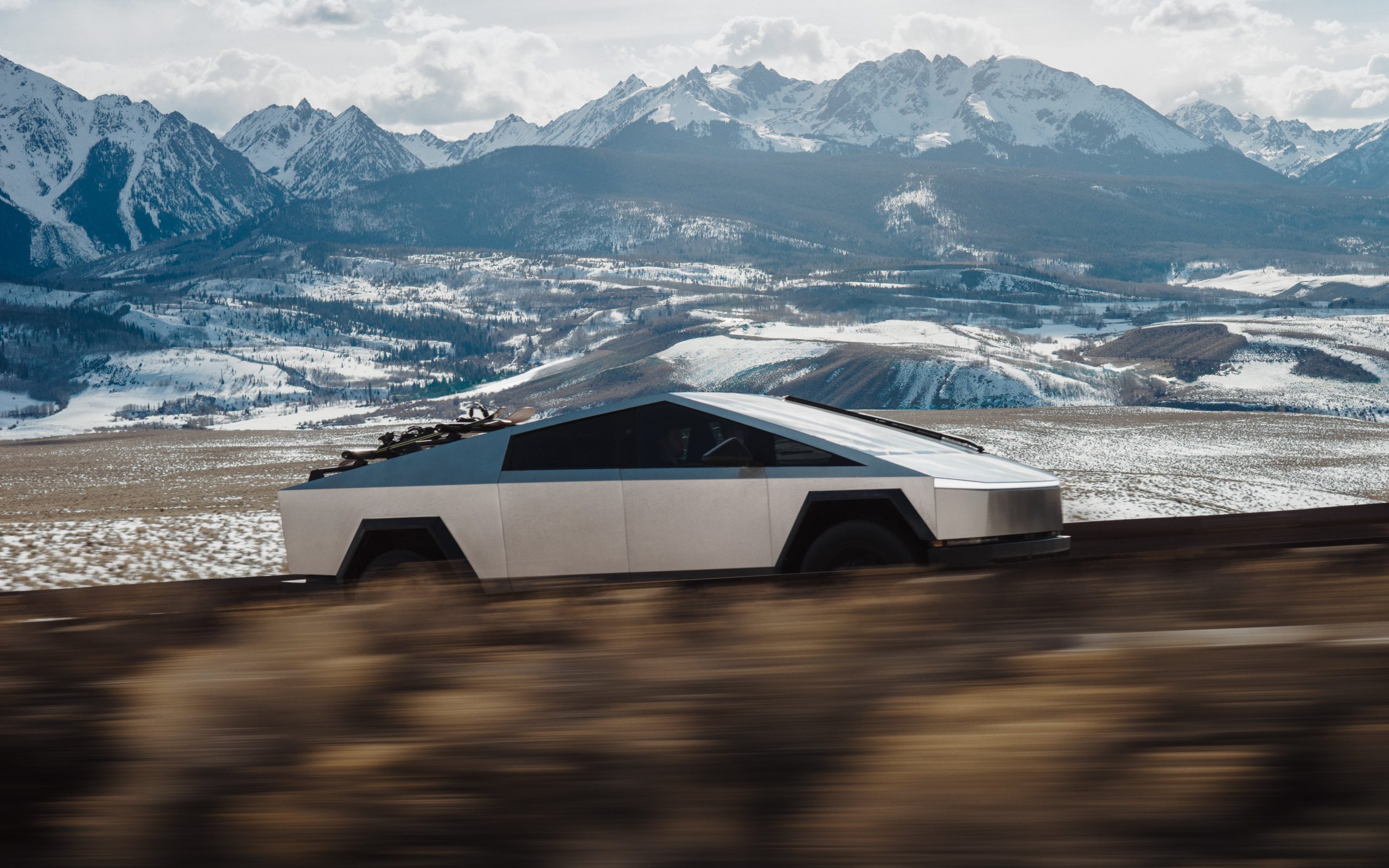
Credit: Tesla
This could drive more fleet and retail buyers toward the Cybertruck, especially those committed to fully electric vehicles without a gas generator backup.
Strengthened Market Leadership and Brand Perception in Pure EVs
Ford’s pullback from large EVs–citing unprofitability and lack of demand for EVs of that size–highlights the challenges legacy automakers face in scaling profitable battery-electric vehicles.
Tesla, as the established leader with efficient production and vertical integration, benefits from reinforced perception as the most viable and committed pure EV manufacturer.
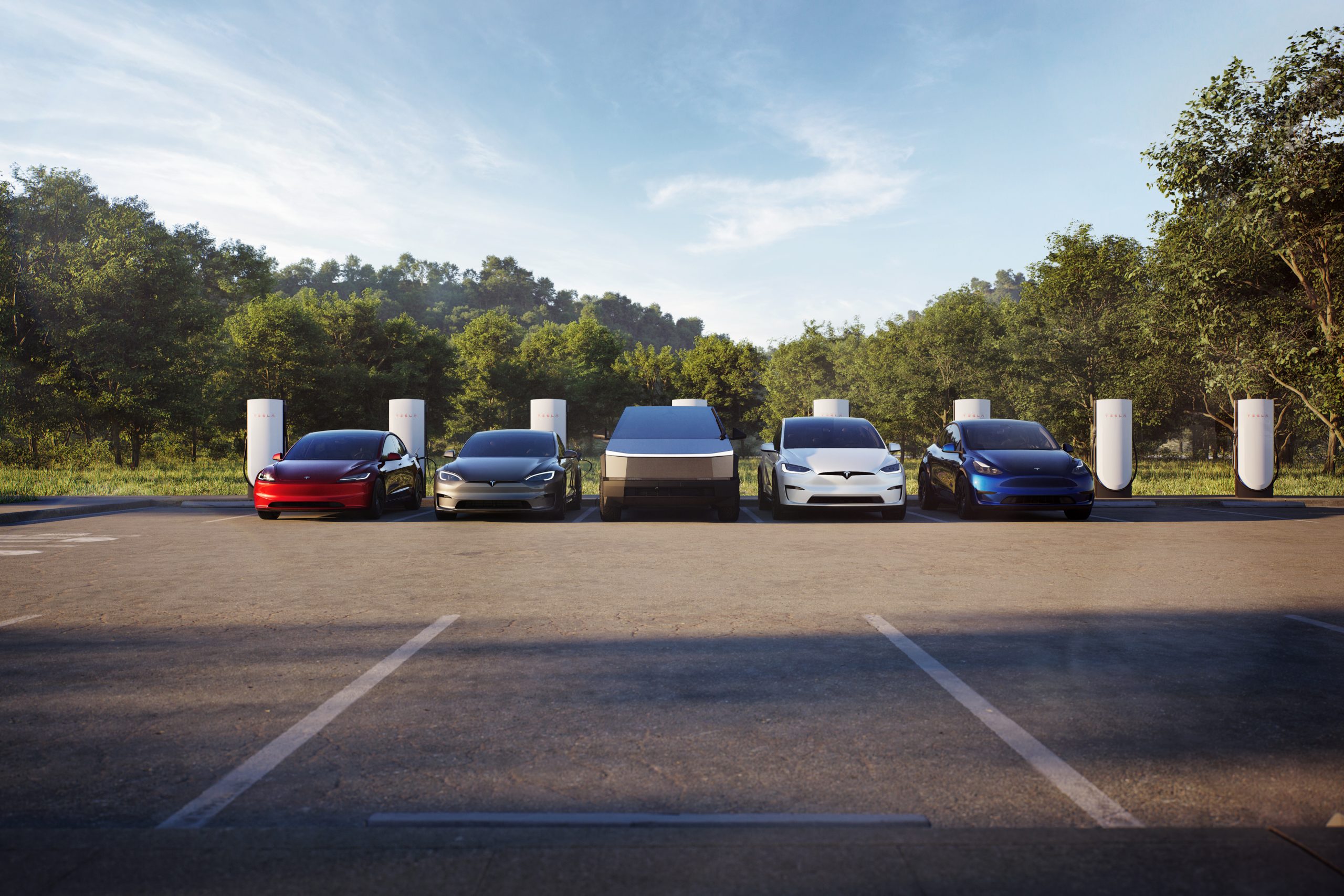
Credit: Tesla
This can boost consumer confidence in Tesla’s long-term ecosystem over competitors retreating to hybrids. With Ford making this move, it is totally reasonable that some car buyers could be reluctant to buy from other legacy automakers.
Profitability is a key reason companies build cars; they’re businesses, and they’re there to make money.
However, Ford’s new strategy could plant a seed in the head of some who plan to buy from companies like General Motors, Stellantis, or others, who could have second thoughts. With this backtrack in EVs, other things, like less education on these specific vehicles to technicians, could make repairs more costly and tougher to schedule.
Potential Increases in Market Share for Large EVs
Interestingly, this could play right into the hands of Tesla fans who have been asking for the company to make a larger EV, specifically a full-size SUV.
Customers seeking large, high-capability electric trucks or SUVs could now look to Tesla for its Cybertruck or potentially a future vehicle release, which the company has hinted at on several occasions this year.
With Ford reallocating resources away from large pure EVs and taking a $19.5 billion charge, Tesla stands to capture a larger slice of the remaining demand in this segment without a major U.S. competitor aggressively pursuing it.
News
Ford cancels all-electric F-150 Lightning, announces $19.5 billion in charges
“Rather than spending billions more on large EVs that now have no path to profitability, we are allocating that money into higher returning areas, more trucks and van hybrids, extended range electric vehicles, affordable EVs, and entirely new opportunities like energy storage.”
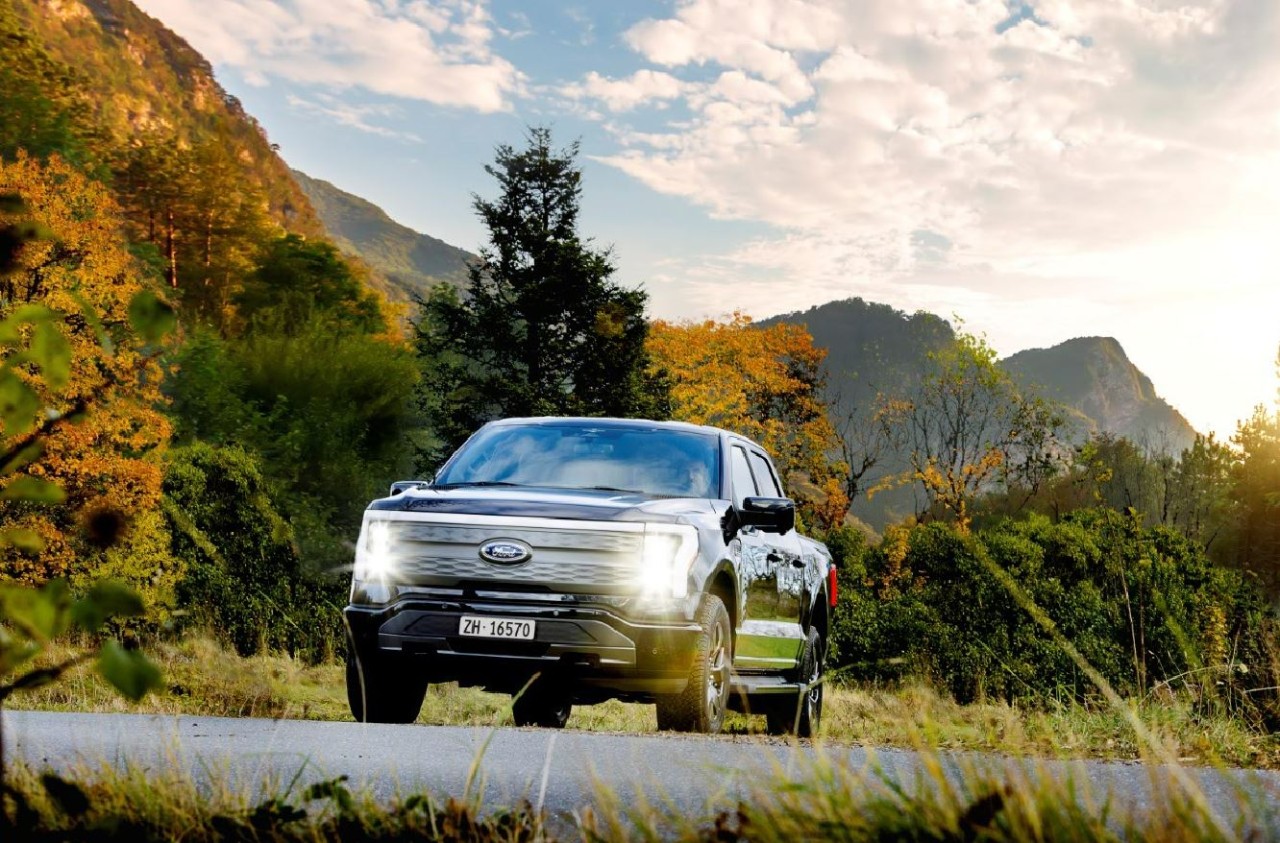
Ford is canceling the all-electric F-150 Lightning and also announced it would take a $19.5 billion charge as it aims to quickly restructure its strategy regarding electrification efforts, a massive blow for the Detroit-based company that was once one of the most gung-ho on transitioning to EVs.
The announcement comes as the writing on the wall seemed to get bolder and more identifiable. Ford was bleeding money in EVs and, although it had a lot of success with the all-electric Lightning, it is aiming to push its efforts elsewhere.
It will also restructure its entire strategy on EVs, and the Lightning is not the only vehicle getting the boot. The T3 pickup, a long-awaited vehicle that was developed in part of a skunkworks program, is also no longer in the company’s plans.
Instead of continuing on with its large EVs, it will now shift its focus to hybrids and “extended-range EVs,” which will have an onboard gasoline engine to increase traveling distance, according to the Wall Street Journal.
“Ford no longer plans to produce select larger electric vehicles where the business case has eroded due to lower-than-expected demand, high costs, and regulatory changes,” the company said in a statement.
🚨 Ford has announced it is discontinuing production of the F-150 Lightning, as it plans to report a charge of $19.5 billion in special items.
The Lightning will still be produced, but instead with a gas generator that will give it over 700 miles of range.
“Ford no longer… pic.twitter.com/ZttZ66SDHL
— TESLARATI (@Teslarati) December 15, 2025
While unfortunate, especially because the Lightning was a fantastic electric truck, Ford is ultimately a business, and a business needs to make money.
Ford has lost $13 billion on its EV business since 2023, and company executives are more than aware that they gave it plenty of time to flourish.
Andrew Frick, President of Ford, said:
“Rather than spending billions more on large EVs that now have no path to profitability, we are allocating that money into higher returning areas, more trucks and van hybrids, extended range electric vehicles, affordable EVs, and entirely new opportunities like energy storage.”
CEO Jim Farley also commented on the decision:
“Instead of plowing billions into the future knowing these large EVs will never make money, we are pivoting.”
Farley also said that the company now knows enough about the U.S. market “where we have a lot more certainty in this second inning.”
News
SpaceX shades airline for seeking contract with Amazon’s Starlink rival

SpaceX employees, including its CEO Elon Musk, shaded American Airlines on social media this past weekend due to the company’s reported talks with Amazon’s Starlink rival, Leo.
Starlink has been adopted by several airlines, including United Airlines, Qatar Airways, Hawaiian Airlines, WestJet, Air France, airBaltic, and others. It has gained notoriety as an extremely solid, dependable, and reliable option for airline travel, as traditional options frequently cause users to lose connection to the internet.
Many airlines have made the switch, while others continue to mull the options available to them. American Airlines is one of them.
A report from Bloomberg indicates the airline is thinking of going with a Starlink rival owned by Amazon, called Leo. It was previously referred to as Project Kuiper.
American CEO Robert Isom said (via Bloomberg):
“While there’s Starlink, there are other low-Earth-orbit satellite opportunities that we can look at. We’re making sure that American is going to have what our customers need.”
Isom also said American has been in touch with Amazon about installing Leo on its aircraft, but he would not reveal the status of any discussions with the company.
The report caught the attention of Michael Nicolls, the Vice President of Starlink Engineering at SpaceX, who said:
“Only fly on airlines with good connectivity… and only one source of good connectivity at the moment…”
CEO Elon Musk replied to Nicolls by stating that American Airlines risks losing “a lot of customers if their connectivity solution fails.”
American Airlines will lose a lot of customers if their connectivity solution fails
— Elon Musk (@elonmusk) December 14, 2025
There are over 8,000 Starlink satellites in orbit currently, offering internet coverage in over 150 countries and territories globally. SpaceX expands its array of satellites nearly every week with launches from California and Florida, aiming to offer internet access to everyone across the globe.
Currently, the company is focusing on expanding into new markets, such as Africa and Asia.








